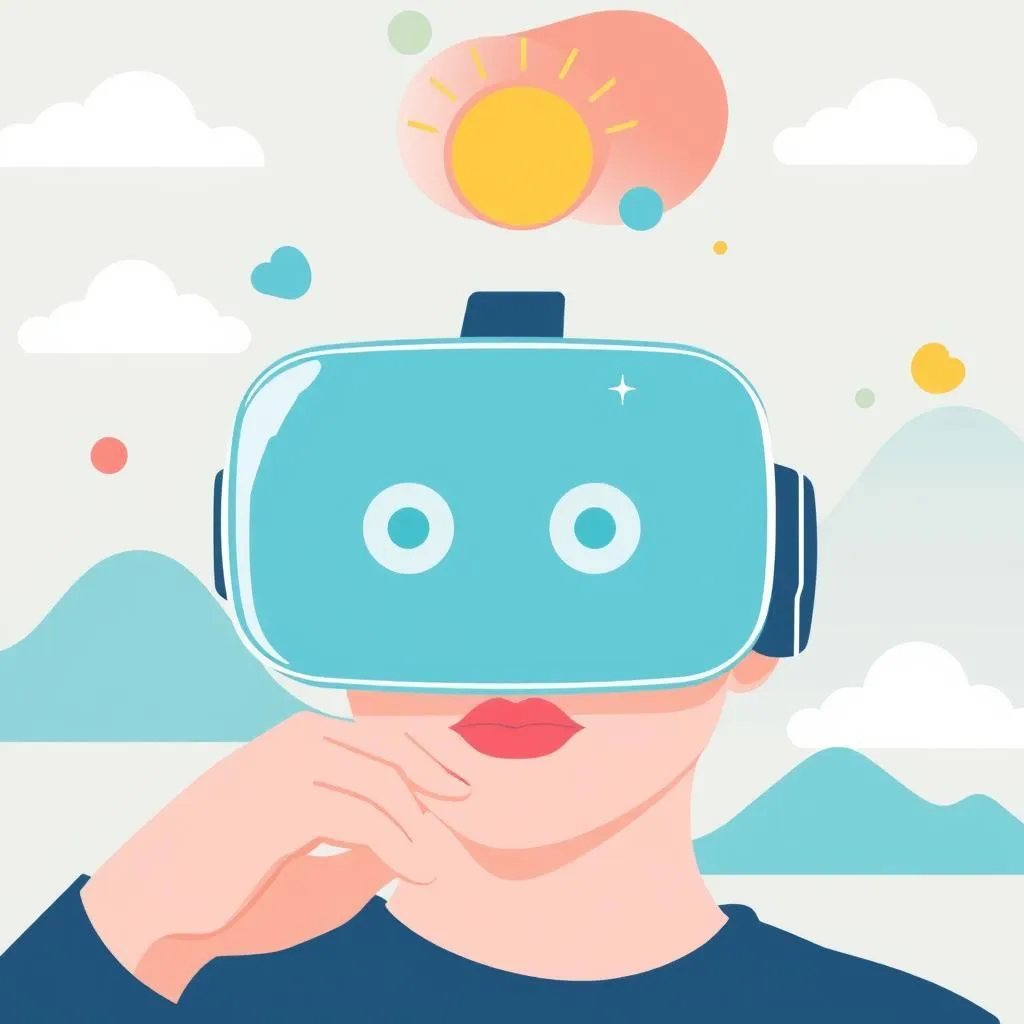
The Impact of VR on Mental Health: Therapy and Beyond
The Impact of VR on Mental Health: Therapy and Beyond

Virtual Reality (VR) is no longer confined to the realm of gaming and entertainment. It has emerged as a transformative tool in the field of mental health, revolutionizing how therapy is delivered and experienced. By offering immersive, interactive environments, VR has opened new doors for mental health professionals and patients alike. In this blog, we delve deep into how VR is impacting mental health treatment, its benefits, challenges, and what the future holds for this groundbreaking technology.
What is VR Therapy?
VR therapy involves the use of virtual reality technology to create simulated environments where individuals can explore, interact, and confront various scenarios. These environments are tailored to address specific mental health conditions, such as anxiety, PTSD, phobias, and depression. With the help of VR headsets and software, patients can experience controlled therapeutic settings without the limitations of the physical world.
How VR Therapy Works
Immersion: Patients wear a VR headset that immerses them in a virtual world designed to address their therapeutic needs.
Interaction: The patient interacts with the virtual environment, guided by a therapist.
Controlled Exposure: Therapists can customize the virtual scenarios to gradually expose patients to triggers or challenges in a safe and controlled manner.
Feedback and Progress: The technology tracks responses, providing real-time feedback and data to measure progress.
Applications of VR in Mental Health
1. Exposure Therapy
Exposure therapy is a common treatment for phobias, PTSD, and anxiety disorders. VR enables therapists to recreate specific scenarios that trigger a patient’s fears in a controlled environment.
Example: A patient with a fear of heights can experience standing on a virtual skyscraper’s edge, gradually desensitizing their fear without real-world risks.
Benefits: Patients feel safer and more in control, leading to higher engagement and better outcomes.
2. Mindfulness and Relaxation
VR offers immersive mindfulness exercises and relaxation techniques.
Applications: Guided meditations in serene virtual landscapes, such as beaches, forests, or mountain tops.
Impact: Helps reduce stress, improve focus, and promote overall mental well-being.
3. PTSD Treatment
For individuals with PTSD, particularly veterans, VR provides an effective way to confront traumatic memories.
How it works: VR recreates scenarios that mimic past traumatic events, allowing patients to process their emotions in a therapeutic setting.
Success Stories: Studies have shown significant improvement in veterans undergoing VR therapy for PTSD.
4. Social Skills Training
Individuals with autism, social anxiety, or other social challenges can practice communication and social interactions in virtual environments.
Features: Simulated job interviews, public speaking scenarios, or casual social interactions.
Benefit: Builds confidence and improves real-world social functioning.
5. Pain Management
VR is increasingly being used as a distraction tool to manage chronic pain and discomfort.
Example: Patients undergoing chemotherapy can be immersed in calming VR experiences, reducing their perception of pain.
Evidence: Research indicates a significant reduction in pain intensity when patients use VR during treatments.
Benefits of VR in Mental Health
1. Safe and Controlled Environment
VR allows therapists to simulate challenging scenarios without real-world risks. This control ensures that exposure therapy, for example, is delivered incrementally and effectively.
2. Enhanced Engagement
The immersive nature of VR keeps patients engaged and motivated. The interactive aspects make therapy feel less clinical and more experiential.
3. Accessibility
VR therapy can be accessed remotely, making mental health care available to individuals in rural or underserved areas.
4. Data-Driven Insights
VR systems often track patient responses, providing valuable data to therapists. This feedback helps in tailoring treatment plans and measuring progress.
5. Cost-Effectiveness
Over time, VR therapy can be more cost-effective than traditional methods, reducing the need for expensive physical setups or travel.
Challenges and Limitations
While VR therapy holds immense promise, there are challenges that need addressing:
Cost of Technology
High initial investment in VR hardware and software can be a barrier for smaller practices or institutions.
Technical Issues
Glitches, lag, or hardware malfunctions can disrupt therapy sessions.
Ethical Concerns
Overexposure to virtual environments may lead to dissociation or dependency in some patients.
Limited Awareness
Many therapists and patients remain unaware of VR therapy’s potential, limiting its adoption.
Adaptation Period
Some patients may find the VR experience overwhelming or uncomfortable initially, requiring gradual acclimatization.
The Future of VR in Mental Health
1. AI-Driven Personalization
Artificial Intelligence (AI) will enable VR environments to adapt in real-time to a patient’s emotional and physiological responses, making therapy more personalized and effective.
2. Wider Adoption
As VR technology becomes more affordable, its use in clinics, schools, and even homes will grow, making mental health care more accessible.
3. Integration with Wearables
Future VR systems may integrate with wearable devices to monitor heart rate, brain activity, and stress levels, providing deeper insights into patient progress.
4. Broader Applications
VR is likely to expand into areas such as grief counseling, addiction treatment, and mood disorder management, offering new possibilities for therapeutic intervention.
Conclusion
Virtual Reality is reshaping the landscape of mental health care. Its ability to create immersive, controlled environments has unlocked new avenues for therapy, from treating PTSD to enhancing mindfulness. While challenges remain, the potential benefits far outweigh the limitations. As technology advances, VR is poised to become an integral part of mental health treatment, offering hope and healing to millions.
By embracing VR, we’re not just pushing the boundaries of technology; we’re creating a future where mental health care is more accessible, effective, and engaging than ever before.